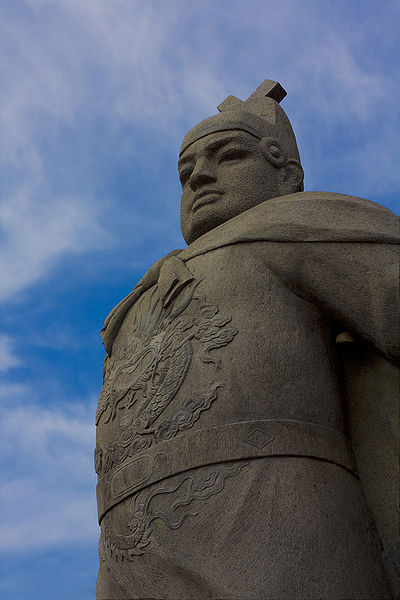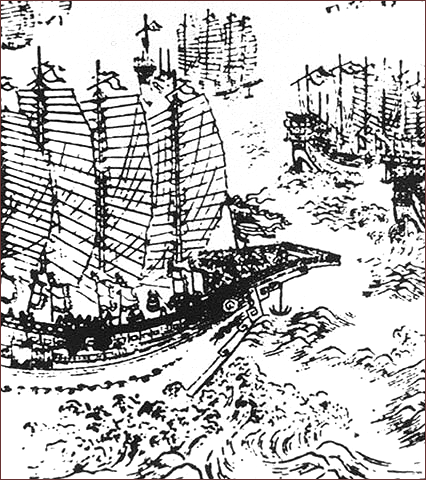Generally, when a large, powerful country starts sending a fleet of explorers to unknown places or places that have not been in contact for a very, very long time, the natives better watch out, c.f. Spanish, Portuguese, Brits, Dutch, French, Germans (1) [sic]. American naval presence is at a height now, too. There are, of course, various ways of consolidating power among your farflung nations: “soft” power (cultural, economic, diplomacy), “hard” power (conquest, administration, formal colonialism), “old skool” (tribute, threat of military decimation, puppet governments).

Statue of Zheng He in Malacca, from Wikipedia
Well, the Chinese did it 600 years ago, at the height of the Ming Dynasty, through Admiral Zheng He, whose 7 naval expeditions took him at least to the Cape of Good Hope, as well as Southeast Asia. The final two journeys’ destinations were recorded then destroyed by the Ming emperor (intriguing – I wonder why that information was dangerous…), leading to rampant speculation by amateur navymen-turned historians that they possibly “discovered” America before the Europeans. They certainly had the technology, though. The question is whether they did, which thanks to the burned records, is hard to prove one way or another.
ship rounding the Cape of Good Hope from “India”, image from Wikipedia
“About the year of Our Lord 1420 a ship, what is called an Indian junk [Zoncho de India], on a crossing of the Sea of India towards the Isle of Men and Women, was driven by a storm beyond the Cape of Diab, through the Green Isles, out into the Sea of Darkness on their way west and southwest. Nothing but air and water was seen for forty days and by their reckoning they ran 2,000 miles and fortune deserted them. When the stress of the weather had subsided they made the return to the said Cavo de Diab in seventy days and drawing near to the shore to supply their wants the sailors saw the egg of a bird called roc, the egg being as big as a seven gallon cask, and the size of the bird is such that from the point of one wing to another was sixty paces and it can quite easily lift an elephant or any other large animal. It does great damage to the inhabitants and is very fast in its flight”. – Fra Mauro World Map (1450), Italian
We have traversed more than 100,000 li (50,000 kilometers) of immense water spaces and have beheld in the ocean huge waves like mountains rising in the sky, and we have set eyes on barbarian regions far away hidden in a blue transparency of light vapors, while our sails, loftily unfurled like clouds day and night, continued their course [as rapidly] as a star, traversing those savage waves as if we were treading a public thoroughfare…
—Erected by Zheng He, Changle, Fujian, 1432. Louise Levathes
17th century Chinese woodblock print possibly of Zheng He’s fleet, image from Wikipedia
(1) Originally read: (Germans were even landlocked!)
NB. The Germans are NOT landlocked. Sorry.





